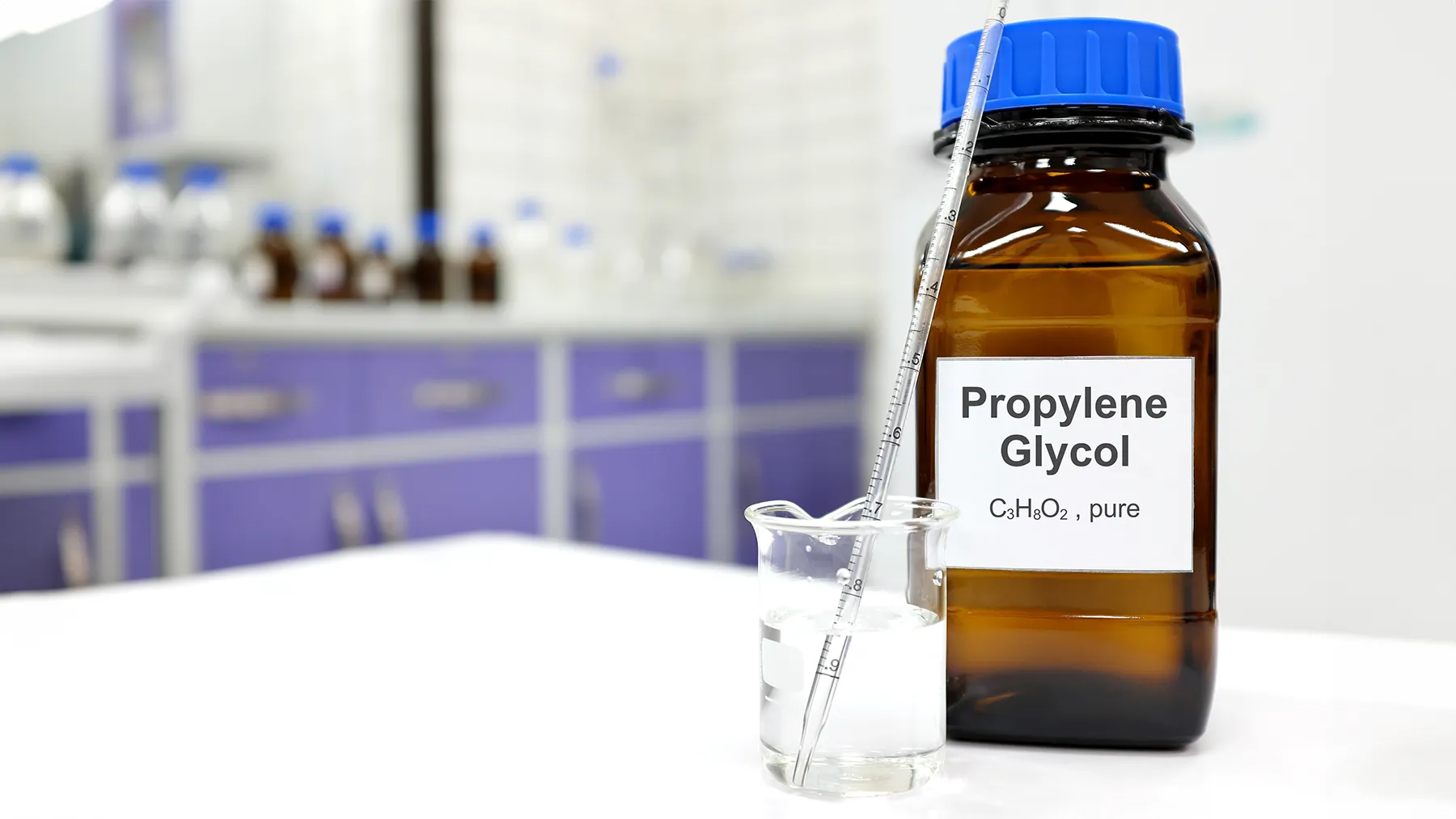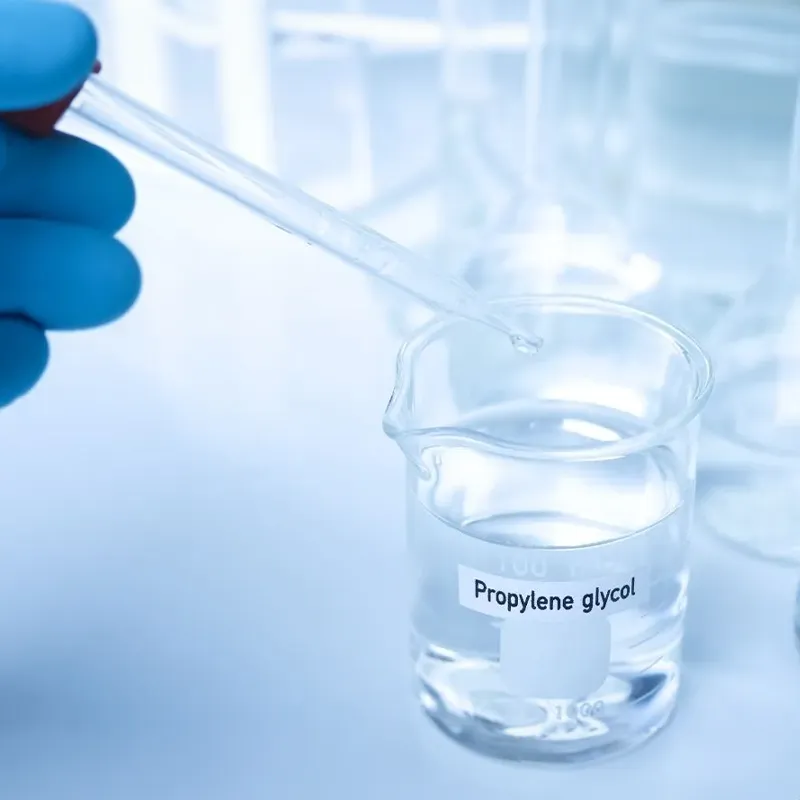
 Table of contents
Table of contents
Formulating safe, high-performing beauty and personal care products requires good-grade ingredients, not just as a technical detail, but as the most important safeguard. The most misunderstood ingredient in this regard is propylene glycol, a commonly used preservative, solvent, and humectant.
With the U.S. hair care market expected to reach $13.86 billion in revenue by 2025 and continue growing at 1.66% annually through 2030 (Statista), this distinction is especially critical.
Industrial-grade and cosmetic (USP or FCC) grade propylene glycol may appear the same across applications; however, both are quite different. For formulators and ingredient buyers committed to clean beauty and regulatory compliance, understanding these differences is vital.
This guide breaks down the key differences between industrial and cosmetic grade propylene glycol. Additionally, it also outlines how to avoid formulation risks and why sourcing the right grade is critical for high-quality beauty products.
What Is Propylene Glycol?

Propylene glycol is a clear, odorless, slightly viscous liquid widely used in skincare, haircare, and personal care formulations. It is a multi-functional ingredient that plays various important roles in cosmetic chemistry:
- Humectant: Attracts and retains moisture from the environment to keep skin hydrated
- Solvent: Helps dissolve and evenly distribute active ingredients
- Emollient: Softens and smoothens skin, improving sensory feel
- Viscosity Controller: Adjusts and stabilizes product texture
- Preservative Booster: Improves the efficacy of certain preservatives
Technical Specifications:
-
AspectsDetails
-
PurityMinimum 99.9% (when cosmetic/pharmaceutical grade)
-
pH Range4.5 - 7.0
-
Viscosity40 - 50 cps at 25°C
-
SolubilityCompletely miscible with water and most organic solvents
Benefits for Cosmetic Formulators:
- Hydrating: Locks in moisture and helps reduce skin dryness and irritation
- Non-Irritating: Well-tolerated by sensitive skin and suitable for daily use
- Stable: Enhances product shelf life and prevents ingredient separation
- Versatile: Compatible with a wide range of actives, emulsifiers, and polymers
- Texture Enhancer: Improves the glide, spreadability, and skin feel of the final product
Its reputation for versatility is well-earned, but the grade of propylene glycol used determines whether it enhances your formula or undermines it.
Cosmetic vs. Industrial Grade: What’s the Real Difference?
When considering how to use propylene glycol in cosmetics, formulators must prioritize not just its functionality but also its grade. At a glance, propylene glycol may look the same across grades, but when it comes to formulation safety, performance, and compliance, the differences are significant. Here is a detailed breakdown of the core distinctions between cosmetic and industrial-grade propylene glycol.
1. Purity & Certification Standards
-
SpecificationCosmetic Grade (USP/FCC)Industrial Grade
-
Purity≥99.5%Often lower, around 95–99%
-
CertificationUSP (United States Pharmacopeia), FCCNo certification or lower industrial standard
Cosmetic-grade propylene glycol complies with pharmaceutical standards like USP or FCC, ensuring it’s safe for direct skin contact, even around sensitive areas like the eyes or lips.
Industrial-grade propylene glycol, by contrast, is meant for applications such as coolants, antifreeze, or paints. While the chemical base may be the same, the presence of impurities like ethylene glycol or heavy metals makes it unsuitable for cosmetic use.
2. Propylene Glycol Uses and Safety Implications
-
Cosmetic Grade Propylene GlycolIndustrial Grade Propylene Glycol
-
Designed for use in skincare, haircare and pharmaceutical formulations.Intended for non-cosmetic uses, such as antifreeze, de-icing agents, heat-transfer fluids, paints, coatings, and adhesives.
-
Adheres to strict Good Manufacturing Practices (GMP), ensuring consistent qualityNot tested for dermal safety; contains impurities unsuitable for products meant for skin contact.
Also Read: Cruelty-Free vs. Vegan Hair Products: What’s the Difference?
Why Cosmetic Grade Propylene Glycol Matters: Key Considerations
The right grade of propylene glycol directly impacts your product and your brand, whether it be regulatory safety or consumer perception.
1. Skin Safety
Did you know? According to Mintel, 80% of U.S. consumers want stricter safety regulations in beauty products. Cosmetic-grade propylene glycol is purified to remove allergens and toxins.
2. Regulatory Compliance
Beauty and personal care products must comply with safety regulations set by FDA and EU Cosmetic Regulation. Only cosmetic-grade propylene glycol meets those standards.
3. Ingredient Stability
Impurities found in lower-grade propylene glycol can compromise formula integrity—altering the scent, texture, or reducing shelf life. That’s precisely why using cosmetic-grade propylene glycol is essential
4. Brand Trust & Consumer Expectations
Skincare products with clean, transparent ingredient lists are becoming increasingly popular, with 52% of consumers actively looking for formulas featuring recognizable ingredients, according to Statista.
Today’s buyers scrutinize labels and sourcing claims. Choosing cosmetic-grade is a reflection of your brand values and integrity.
What Can Go Wrong With Industrial Grade Propylene Glycol?
Despite the cost savings, using industrial-grade can cause:
- Product contamination (from microbial or chemical impurities)
- Labeling violations
- Skin sensitization or toxicity
- Regulatory action or market recalls
Buyer’s Checklist: How to Source the Right Propylene Glycol?
Before placing your next order, confirm:
- Is it certified USP or FCC grade?
- Do you receive a Certificate of Analysis (COA) per batch?
- Does the supplier follow GMP (Good Manufacturing Practice) standards?
- Are impurities (heavy metals, residual solvents) tested and disclosed?
- Is the product traceable to a qualified, audited manufacturer?
- Does it comply with FDA and EU cosmetic regulations?
- Are you clear on how to use propylene glycol in cosmetics, including concentration levels and formulation compatibility?
“Quality is never an accident. It is always the result of intelligent effort.”
Propylene glycol might look like a basic ingredient, but using the wrong grade can affect your product’s quality and harm your brand’s reputation.
At Natural Cosmetic Labs, we use only cosmetic-grade, safety-tested propylene glycol in our formulations. Our focus is on clean beauty, clear ingredient sourcing, and strict quality checks, so you can create products that your customers can trust, right from the first drop.
FAQs
References
https://cosmetics.specialchem.com/inci-ingredients/propylene-glycol
https://www.linkedin.com/pulse/exploring-propylene-glycol-industrial-vs-usp-grade-applications-cui-q9kic
https://journals.sagepub.com/doi/pdf/10.3109/10915819409141005
https://greenfield.com/…EMA-ICH.pdf
https://www.cosmeticsdesign.com/…safety-regulations-in-beauty/
https://media.market.us/skincare-statistics/
https://www.statista.com/…/hair-care/united-states


